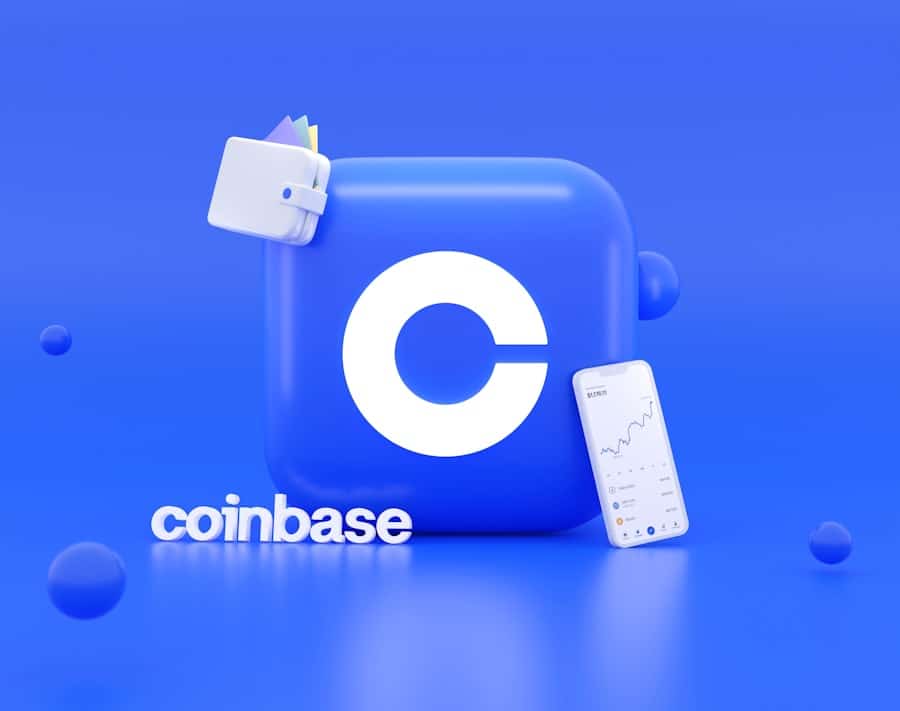Decentralized Finance, commonly referred to as DeFi, represents a paradigm shift in the financial landscape, leveraging blockchain technology to create an open and permissionless financial ecosystem. Unlike traditional finance, which relies on centralized institutions such as banks and brokers, DeFi operates on decentralized networks, primarily built on Ethereum and other blockchain platforms. This innovative approach allows users to engage in financial transactions without intermediaries, thereby reducing costs and increasing accessibility.
The core principles of DeFi include transparency, security, and inclusivity, enabling anyone with an internet connection to participate in financial activities such as lending, borrowing, trading, and earning interest. At its essence, DeFi encompasses a wide array of financial services that are typically offered by traditional banks. These services include lending platforms, decentralized exchanges (DEXs), stablecoins, and yield farming protocols.
This not only enhances efficiency but also democratizes access to financial services, particularly for individuals in underbanked regions. As a result, DeFi has gained significant traction among tech-savvy users and investors seeking alternatives to conventional banking systems.
Key Takeaways
- DeFi refers to the use of blockchain technology and cryptocurrencies to recreate traditional financial systems such as lending, borrowing, and trading in a decentralized manner.
- DeFi has the potential to disrupt traditional lending by providing more accessible and efficient financial services, reducing the need for intermediaries and lowering costs for borrowers.
- Decentralized lending offers advantages such as global accessibility, lower barriers to entry, and increased transparency compared to traditional lending systems.
- Risks and challenges of decentralized lending include smart contract vulnerabilities, lack of regulatory oversight, and potential for market manipulation.
- Smart contracts play a crucial role in decentralized lending by automating the lending process, reducing the need for intermediaries, and increasing security and transparency.
The Impact of DeFi on Traditional Lending
Breaking Down Barriers to Access
DeFi disrupts this model by allowing users to borrow and lend assets directly through decentralized platforms without the need for extensive documentation or credit checks. This shift not only broadens access to capital but also fosters a more inclusive financial environment.
Speed and Efficiency of DeFi Lending
In contrast to traditional lending processes, DeFi platforms facilitate near-instantaneous transactions through automated smart contracts. For instance, platforms like Aave and Compound enable users to deposit cryptocurrencies as collateral and receive loans almost immediately. This rapid turnaround time appeals to borrowers who require quick access to funds for various purposes, from personal expenses to investment opportunities.
A New Era for Lending
The emergence of DeFi lending marks a significant shift in the way people access capital. With its speed, efficiency, and inclusivity, DeFi lending is poised to disrupt traditional finance and create new opportunities for individuals and businesses alike.
Advantages of Decentralized Lending

Decentralized lending offers several advantages that make it an attractive alternative to traditional lending systems. One of the most significant benefits is the elimination of intermediaries. By removing banks and other financial institutions from the equation, borrowers and lenders can engage directly with one another, resulting in lower fees and more favorable interest rates.
This peer-to-peer model not only reduces costs but also enhances the overall efficiency of the lending process. Another notable advantage is the increased accessibility that DeFi provides. Individuals who may have been denied loans by traditional banks due to poor credit scores or lack of collateral can find opportunities within decentralized lending platforms.
For example, platforms like MakerDAO allow users to borrow against their cryptocurrency holdings without requiring a credit check. This inclusivity empowers a broader demographic to access financial services and participate in the global economy. Additionally, decentralized lending often offers higher yields for lenders compared to traditional savings accounts or fixed-income investments.
Users can earn interest on their deposited assets by providing liquidity to lending pools or participating in yield farming strategies. This potential for higher returns attracts both individual investors and institutional players looking to diversify their portfolios in a low-interest-rate environment.
Risks and Challenges of Decentralized Lending
Despite its numerous advantages, decentralized lending is not without risks and challenges that participants must navigate carefully. One of the primary concerns is the volatility associated with cryptocurrencies. The value of digital assets can fluctuate dramatically within short periods, posing risks for both borrowers and lenders.
For instance, if a borrower takes out a loan using cryptocurrency as collateral and the value of that collateral drops significantly, they may face liquidation—a process where their collateral is sold off to cover the loan amount. This risk is particularly pronounced in highly volatile markets. Another challenge lies in the potential for smart contract vulnerabilities.
While smart contracts are designed to execute transactions automatically based on predefined conditions, they are not immune to bugs or exploits. A flaw in the code could lead to significant financial losses for users. High-profile incidents such as the hack of the DeFi platform Poly Network in 2021 underscore the importance of rigorous security audits and ongoing monitoring of smart contracts to mitigate these risks.
Furthermore, the lack of regulatory oversight in the DeFi space raises concerns about consumer protection and market integrity. Unlike traditional financial institutions that are subject to strict regulations designed to protect consumers, DeFi platforms operate in a largely unregulated environment. This absence of oversight can lead to fraudulent schemes or predatory lending practices that exploit unsuspecting users.
The Role of Smart Contracts in Decentralized Lending
Smart contracts are at the heart of decentralized lending platforms, serving as the backbone that enables trustless transactions between parties. These self-executing contracts automatically enforce the terms of an agreement without requiring intermediaries. In the context of lending, smart contracts facilitate various functions such as collateral management, interest calculations, and loan repayments.
When a borrower seeks a loan on a DeFi platform, they typically need to provide collateral in the form of cryptocurrency. The smart contract locks this collateral until the loan is repaid. If the borrower fails to meet their repayment obligations or if the value of their collateral falls below a certain threshold, the smart contract automatically triggers liquidation processes to protect lenders’ interests.
This automation not only streamlines operations but also enhances security by minimizing human error. Moreover, smart contracts enable innovative financial products that were previously unimaginable within traditional finance. For example, flash loans allow users to borrow assets without collateral for a very short period—typically just a few seconds—provided they repay the loan within the same transaction block.
This unique feature has opened up new avenues for arbitrage opportunities and liquidity provision in decentralized markets.
The Growth of Decentralized Lending Platforms

The growth of decentralized lending platforms has been nothing short of remarkable over recent years. As more individuals become aware of the benefits offered by DeFi, numerous platforms have emerged to cater to diverse user needs. Leading platforms such as Aave, Compound, and MakerDAO have gained significant traction by providing user-friendly interfaces and robust functionalities that appeal to both novice and experienced users alike.
Aave has distinguished itself by offering innovative features such as flash loans and rate switching between stable and variable interest rates. Its user-centric design allows borrowers to choose their preferred loan terms while providing lenders with flexible options for earning interest on their deposits. Similarly, Compound has gained popularity for its algorithmic interest rate model that adjusts rates based on supply and demand dynamics within its liquidity pools.
The rapid expansion of these platforms has also attracted substantial investment from venture capital firms and institutional players seeking exposure to the burgeoning DeFi sector. As a result, many decentralized lending platforms have seen their total value locked (TVL) soar into billions of dollars, reflecting growing confidence in this new financial paradigm.
Regulatory Considerations for Decentralized Lending
As decentralized lending continues to gain momentum, regulatory considerations are becoming increasingly important for both users and platform operators. The lack of centralized control in DeFi poses unique challenges for regulators who seek to ensure consumer protection while fostering innovation within the financial sector. Governments around the world are grappling with how best to approach regulation in this rapidly evolving landscape.
One key area of focus is anti-money laundering (AML) and know-your-customer (KYC) requirements. Traditional financial institutions are required to implement stringent AML/KYC protocols to prevent illicit activities such as money laundering and fraud. However, many DeFi platforms operate without these safeguards due to their decentralized nature.
As regulators seek to address these concerns, there may be pressure on DeFi projects to adopt some form of identity verification while balancing user privacy rights. Additionally, regulatory clarity surrounding taxation is essential for participants in decentralized lending markets. As users earn interest or engage in trading activities within DeFi ecosystems, understanding tax implications becomes crucial for compliance purposes.
Clear guidelines from tax authorities can help foster greater participation while ensuring that users fulfill their tax obligations.
The Future of Decentralized Lending
The future of decentralized lending appears promising as technological advancements continue to reshape the financial landscape. With ongoing innovations in blockchain technology and smart contracts, we can expect enhanced security features and improved user experiences across DeFi platforms. Furthermore, as more individuals become familiar with cryptocurrencies and blockchain technology, adoption rates are likely to increase significantly.
Interoperability between different blockchain networks is another area poised for growth. Currently, many DeFi platforms operate within isolated ecosystems; however, advancements in cross-chain technology could enable seamless interactions between various networks. This would allow users to leverage assets across multiple platforms while enhancing liquidity within decentralized lending markets.
Moreover, as regulatory frameworks evolve to accommodate DeFi’s unique characteristics, we may witness greater institutional participation in decentralized lending markets. Traditional financial institutions may explore partnerships with DeFi projects or develop their own decentralized solutions to remain competitive in an increasingly digital economy. In conclusion, decentralized lending represents a transformative force within the financial sector that challenges conventional norms while offering unprecedented opportunities for users worldwide.
In a related article discussing the importance of efficient software tools, Best Software for Working with Piles of Numbers highlights the significance of utilizing the right technology to streamline data analysis and decision-making processes. Just as decentralized finance is revolutionizing lending practices, having the right software can greatly enhance productivity and accuracy in handling large amounts of numerical data. By leveraging advanced tools, individuals and businesses can unlock their full potential and achieve greater success in their endeavors.
FAQs
What is Decentralized Finance (DeFi)?
Decentralized Finance (DeFi) refers to the use of blockchain technology and cryptocurrencies to recreate traditional financial systems such as lending, borrowing, and trading without the need for intermediaries like banks or financial institutions.
How does Decentralized Finance revolutionize lending?
Decentralized Finance revolutionizes lending by allowing individuals to lend and borrow directly from each other using smart contracts and blockchain technology, eliminating the need for traditional financial intermediaries.
What are the benefits of Decentralized Finance in lending?
Some benefits of Decentralized Finance in lending include lower fees, faster transactions, increased accessibility to financial services, and the ability to earn interest on assets without the need for a traditional bank account.
What are the risks associated with Decentralized Finance lending?
Risks associated with Decentralized Finance lending include smart contract vulnerabilities, price volatility of cryptocurrencies, and potential regulatory uncertainty.
How does Decentralized Finance impact traditional lending institutions?
Decentralized Finance has the potential to disrupt traditional lending institutions by offering an alternative to their services, potentially reducing their market share and challenging their business models.

